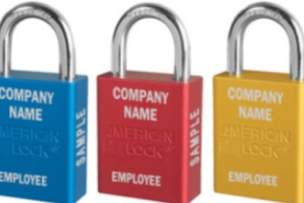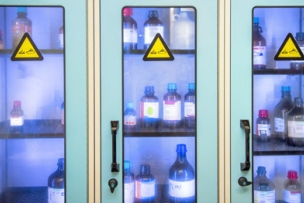Violations of OSHA’s new silica standards could result in hefty fines. Use our checklist to make sure you’re ready when the rules go into effect.
Are you ready to take on the new standards for respirable crystalline silica? We’re here to help you find ways to be in compliance from the outset. Download the silica checklist to get started.
A new respirable crystalline silica standard from the Occupational Safety and Health Administration for general industry and maritime activities (OSHA Standard 1910.1053) goes into effect in just a matter of days on June 23, 2018. To avoid citations and fines, employers will need to meet a lower exposure limit and new record-keeping requirements, as well as offer medical monitoring to employees exposed to silica.
As it did when the new silica standard for the construction industry (OSHA Standard 1926.1153) went into effect in September 2017, OSHA will be delaying full enforcement.
“During the first 30 days of enforcement, OSHA will offer compliance assistance for employers who make good faith efforts to comply with the new standard,” the agency reports.
To Ensure Silica Safety, Look to the Silica Construction Violations
If you’re wondering what enforcement of the manufacturing and maritime rule is likely to look like, the response to the construction standard may offer some clues.
In an article for EHS Today, David Sparkman, the founding editor of ACWI Advance, the newsletter of the American Chain of Warehouses Inc., looks at enforcement actions taken by OSHA related to the construction standard. Between Oct. 23, 2017, when the construction rule went into effect with full enforcement, and April 23, 2018, OSHA issued 117 violations to construction employers, Sparkman reports. Of those violations, 80 percent were serious.
So far, Sparkman says, the most frequent citations (in order of frequency) were:
- Failing to measure silica exposure levels (29 C.F.R. 1926.1153(d)(2)(i))
- Incorrectly following OSHA’s silica Table 1’s procedures (29 C.F.R. 1926.1153 (c)(1))
- Lack of a written exposure control plan (29 C.F.R. § 1926.1153(g)(1))
Bruce Rolfsen, an occupational safety and health reporter for Bloomberg Environment, notes those numbers likely don’t show the full impact of construction enforcement.
“The number of violations in the initial six months is likely to increase since OSHA can take up to six months after an inspection to issue citations,” he says.
“OSHA’s first and foremost concern is with employer compliance with the permissible exposure limits (PEL) and proper exposure assessment,” John F. Martin, an attorney for Ogletree Deakins, writes in the National Law Review. “If an OSHA inspector comes out to [a] location and learns an employer has not done an exposure assessment, then one can expect the agency to recommend and issue a citation.”
Upon his analysis of silica construction violations, Martin finds the most surprising aspect to be those companies not following OSHA’s Table 1—which he states is not a requirement, but a choice.
“If a construction employer opts not to follow the controls and respiratory protections for the equipment/tasks identified in Table 1, then it must follow the alternative exposure control methods in section 1926.1153(d), including conducting an exposure assessment,” Martin notes.
Essentially, Martin’s take is to either fully comply with Table 1 or make sure you are following the alternative exposure methods. Be ready to show proof of exposure data, a written control plan and everything else in the regulation, including using the right personal protective equipment, demarcation areas with limited access, communicating with employees, and the appropriate medical surveillance—among other requirements.
Need a deeper dive on silica compliance? Read “OSHA Readiness: New Silica Standard Is About to Go Into Effect.”
The Cost of Noncompliance for Silica: What to Expect
What would those violations cost you? In 2015, OSHA updated penalties to be in line with inflation for violations, increasing penalty maximums and instituting a regular increase. Penalties for serious violations of OSHA rules or standards, OSHA violations deemed not serious, or violations of posting standards went from a maximum of $7,000 in 2015 to a maximum of $12,934 as of Jan. 2, 2018. Penalties for willful or repeat violations rose from a maximum of $70,000 in 2015 to $129,336 in 2018.
So a facility that doesn’t meet the new requirements and gets cited for inadequate silica control, a lack of a training plan, a lack of a written silica exposure control plan and inadequate medical surveillance could potentially rack up $50,000 in penalties.
We’ve created a silica safety checklist to help you avoid those costly fines. Check it out below or print out a copy of the PDF to make sure you’re meeting all of the new standard’s requirements.
“OSHA’s first and foremost concern is with employer compliance with the permissible exposure limits (PEL) and proper exposure assessment. If an OSHA inspector comes out to location and learns an employer has not done an exposure assessment, then one can expect the agency to recommend and issue a citation.”
A Silica Safety Checklist
Two new standards from the Occupational Safety and Health Administration are designed to protect workers from respirable crystalline silica, which can cause serious and sometimes life-threatening illnesses. The new standards establish permissible exposure limits and exclude tasks where exposures do not reach a certain amount over an eight-hour time-weighted average.
Refer to the two applicable OSHA standards—OSHA Standard 1926.1153, Respirable Crystalline Silica, for construction activities, and OSHA Standard 1910.1053, Respirable Crystalline Silica, for general industry and maritime activities—for complete details. Use this checklist to help make sure you meet the general industry and maritime standard.
Download this silica safety checklist.
__Follow Table 1
Implement the engineering controls, work practices and respiratory protection for tasks listed on Table 1. Employers who meet the Table 1 controls are not required to measure respirable crystalline silica exposures to verify that levels are at or below the PEL (50 µg/m3) for workers engaged in those 18 specific tasks.
__Assess Employee Exposure
For employees engaged in tasks other than those in Table 1, assess the exposure of each employee who is or may be exposed to respirable crystalline silica at or above the action level of 50 µg/m3 according to the methods described in the standard.
__Designate Regulated Areas
Determine the areas in which an employee might be exposed to airborne concentrations of respirable crystalline silica in excess of the PEL and create a clearly delineated, regulated space, with signs at entrances and access to the area limited to people authorized to work there.
__Create a Control Exposure Plan
Write a control exposure plan describing the tasks that involve exposure to respirable crystalline silica; the engineering controls, work practices, and respiratory protection to limit exposure; and the housekeeping measures used to limit exposure. Make sure the plan is readily available for employees and others to read and copy and that it is reviewed at least annually.
__Provide Respiratory Protection
Using Table 1 as a guide, provide respirators to affected employees. Also provide respiratory protection when exposures exceed the PEL or when employees are in a regulated area (even if they are not performing tasks) and might be exposed. Respirators are only allowed when engineering and work practice controls are not able to lower respirable crystalline silica levels to the PEL.
__Practice Safe Housekeeping
Prohibit the use of dry sweeping, dry brushing or compressed air to blow away dust unless other methods, such as wet sweeping or HEPA-filtered vacuuming, are not feasible.
__Provide Medical Surveillance
Make OSHA-compliant medical surveillance available to employees at no cost if they’re exposed to respirable crystalline silica at or above PEL for more than 30 days per year.
__Establish a Communication Program
Communicate the hazards of respirable crystalline silica through labels, information sheets, signage and training. Employees should understand the dangers of exposure to respirable crystalline silica, the tasks that could result in exposure and the measures that are in place to reduce that exposure.
__Keep Records
Maintain records of all air monitoring and medical surveillance data for at least 30 years, unless a worker was employed for less than a year.
Do you feel you are ready for silica compliance? What have you done to prepare? Share your experience.





Talk to Us!
Are there OSHA standards regulating Surface Grinders that use silica type grinding wheels?
Paris Lortscher
Sioux Steel
Tool & Die
25Hi Paris,
Yes, there are standards. The article above lists some of them, and The Safety Checklist above is a great start to keeping your employees safe. Please keep in mind that grinding wheels generate different forms of Silica, all of which can be harmful, so it is important for the Industrial Hygienist to sample for all those suspected materials.
34Leave a reply
Your email address will not be published. Required fields are marked *